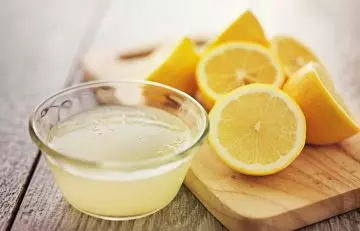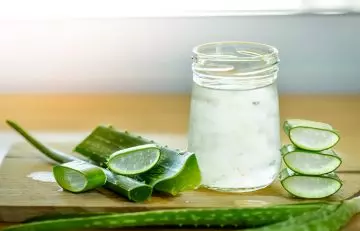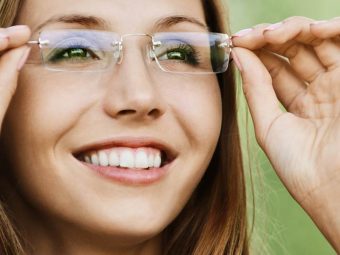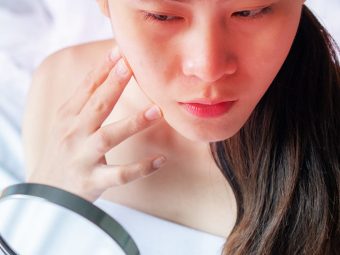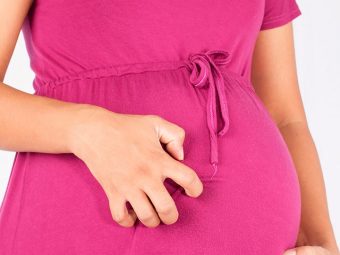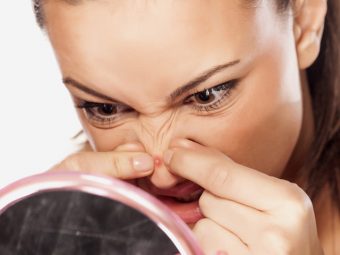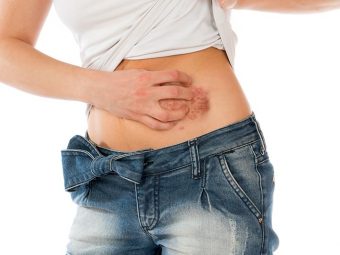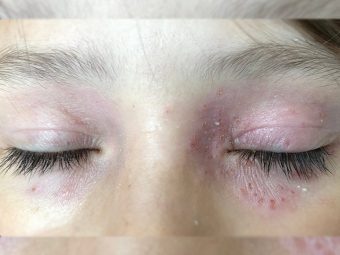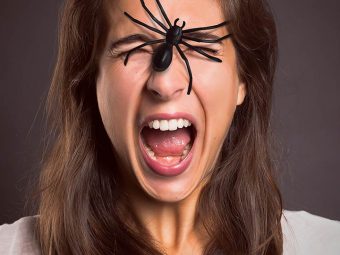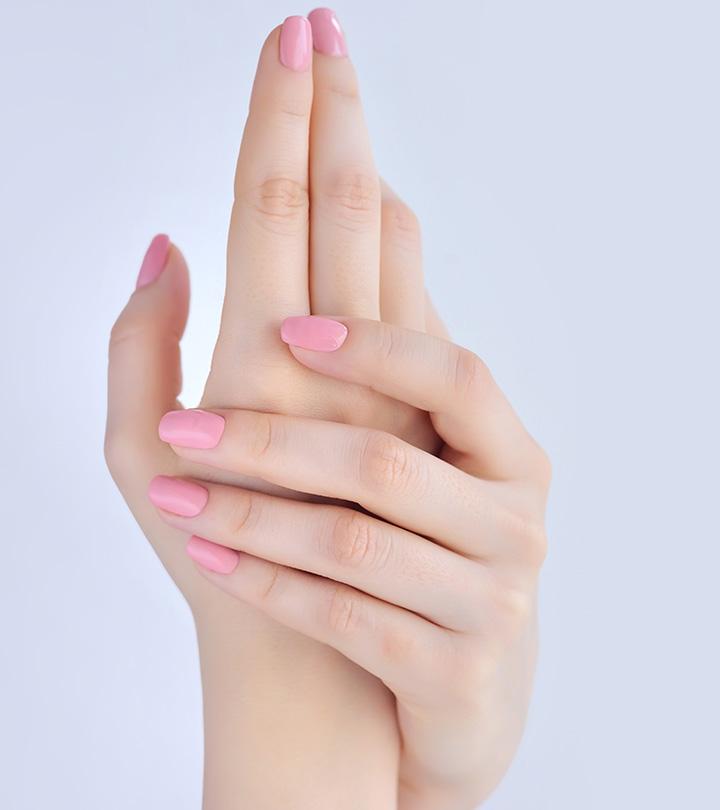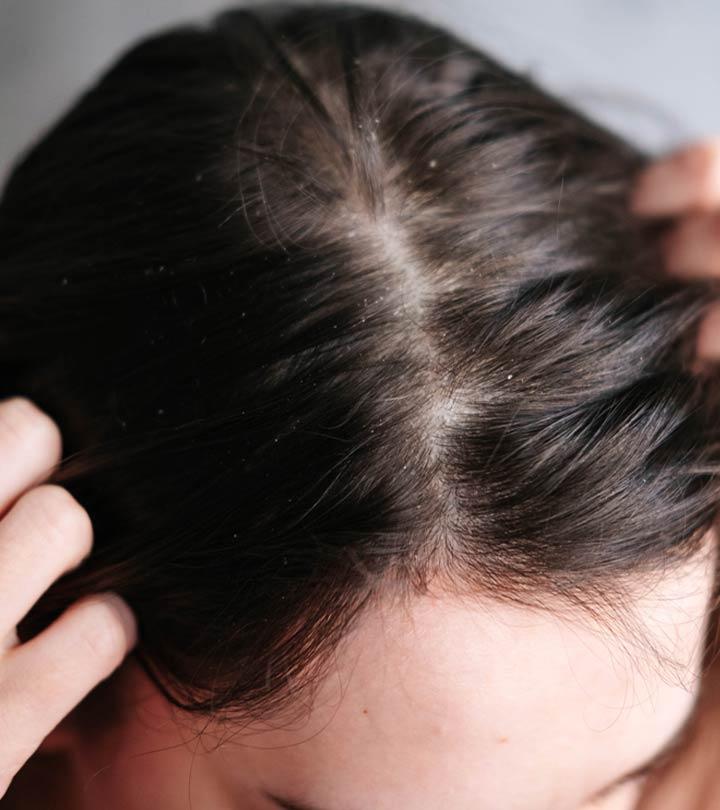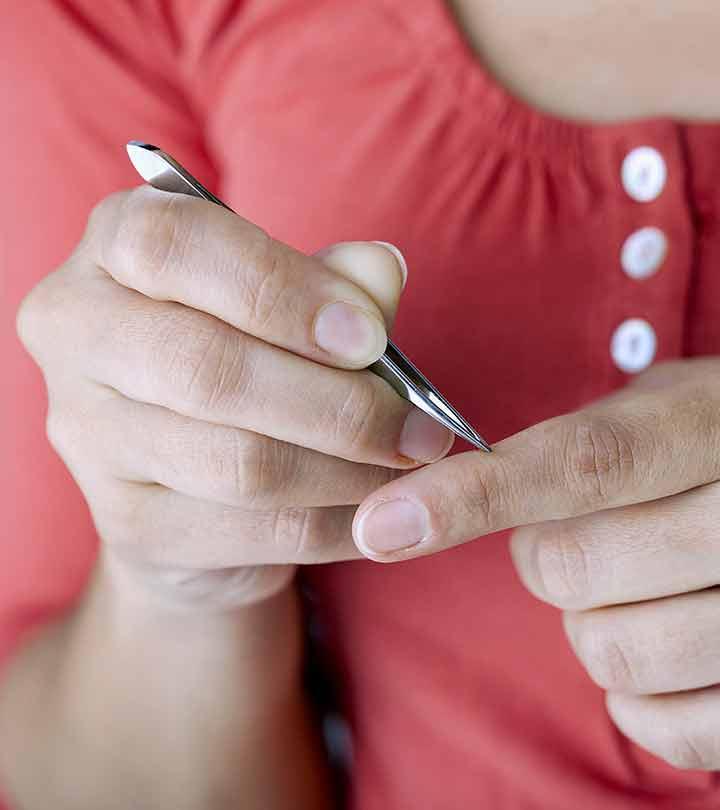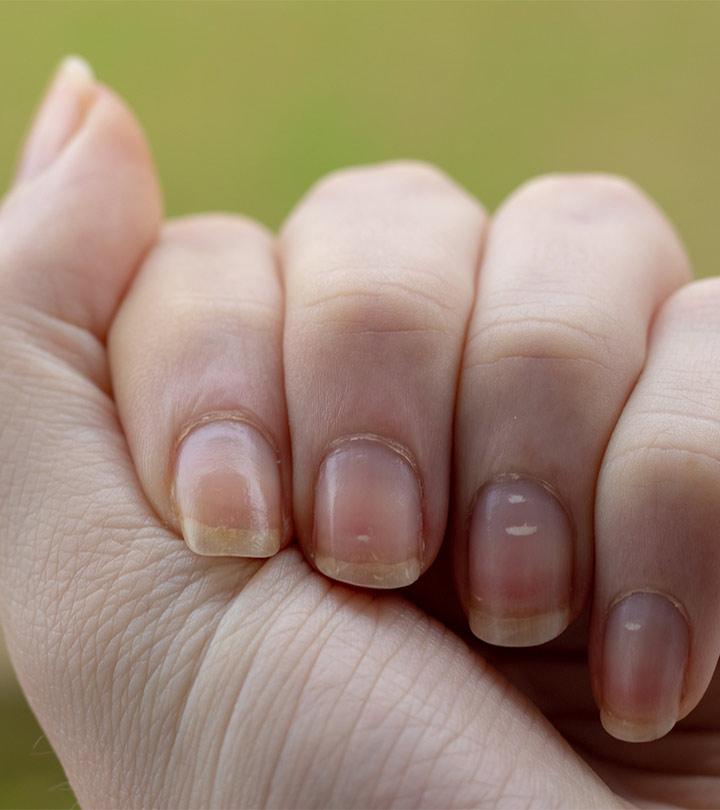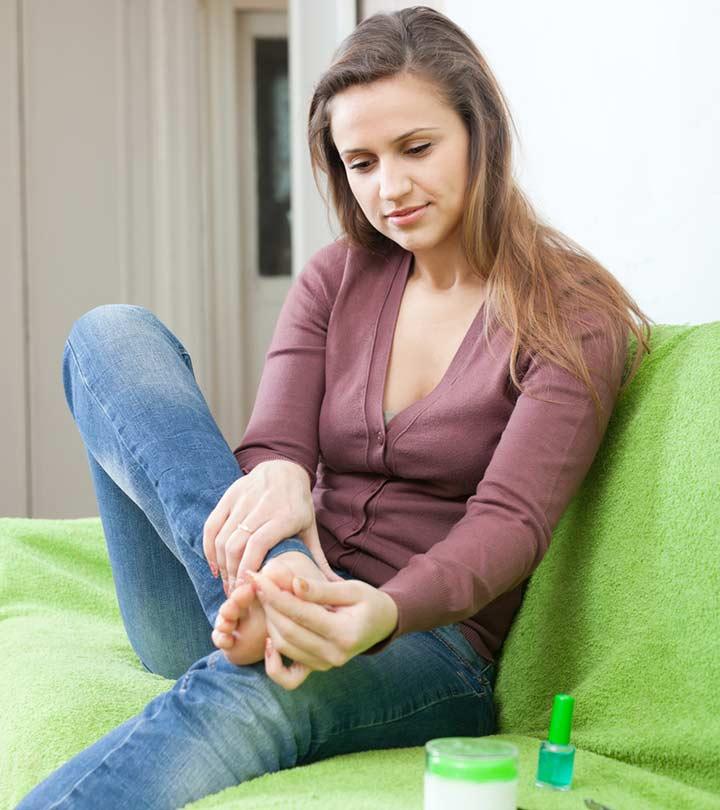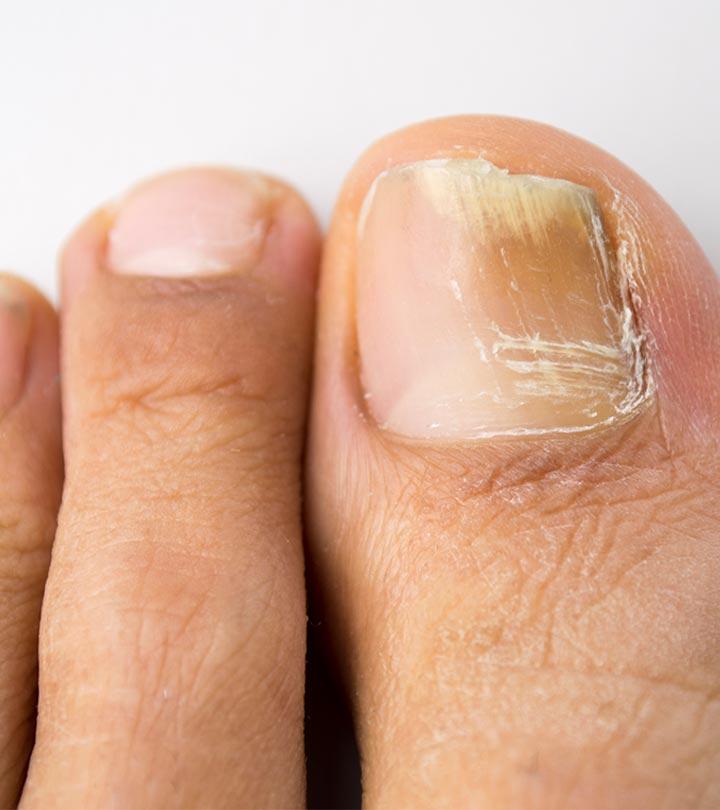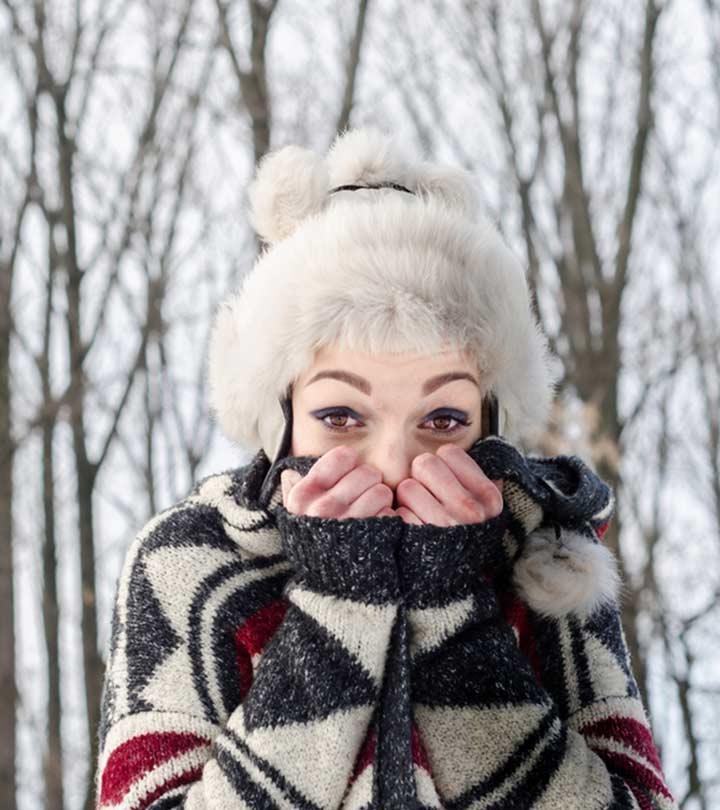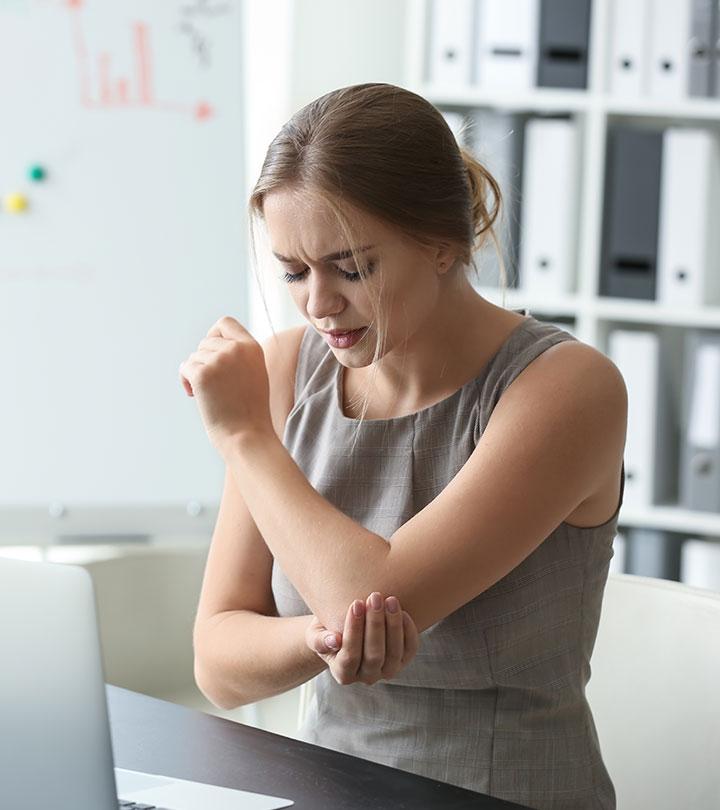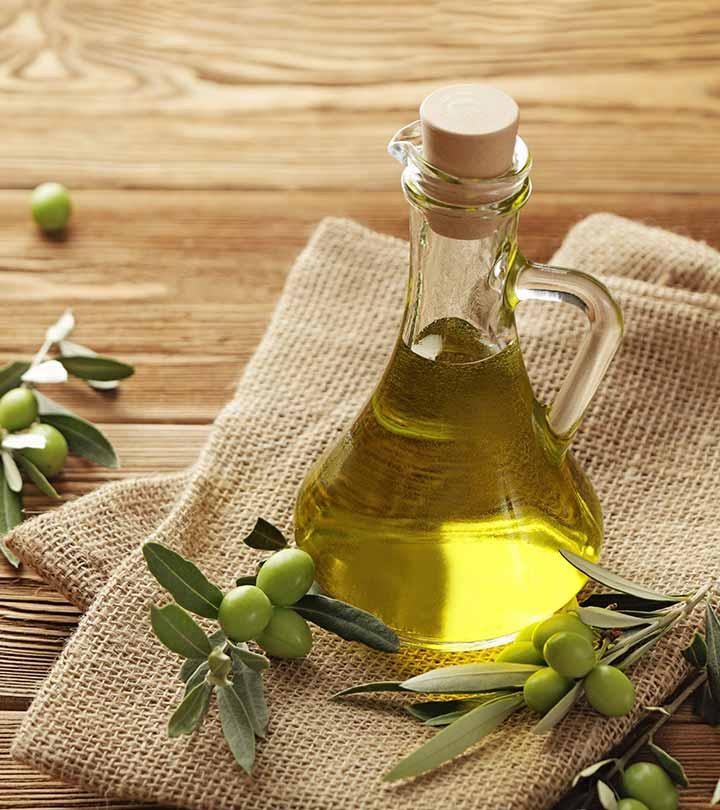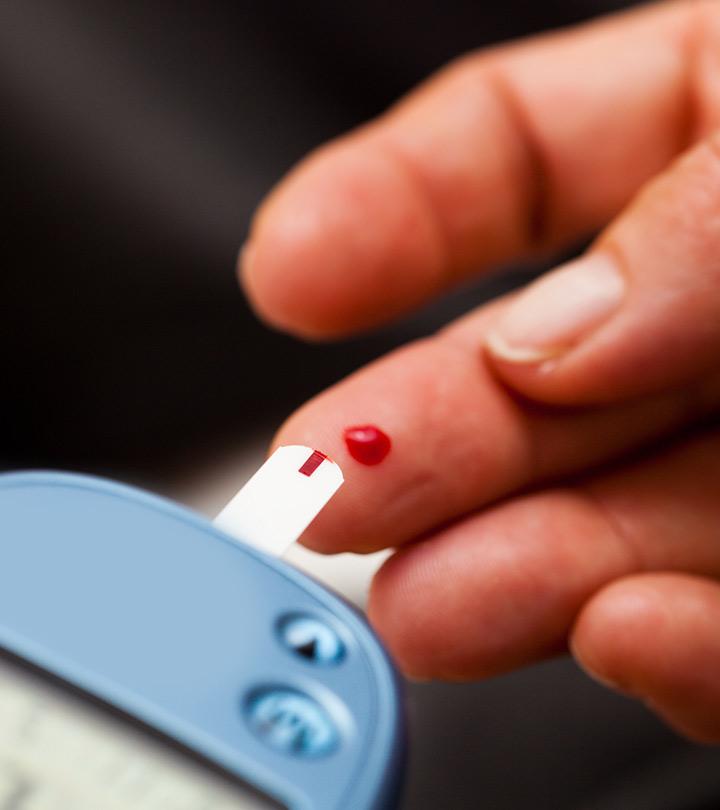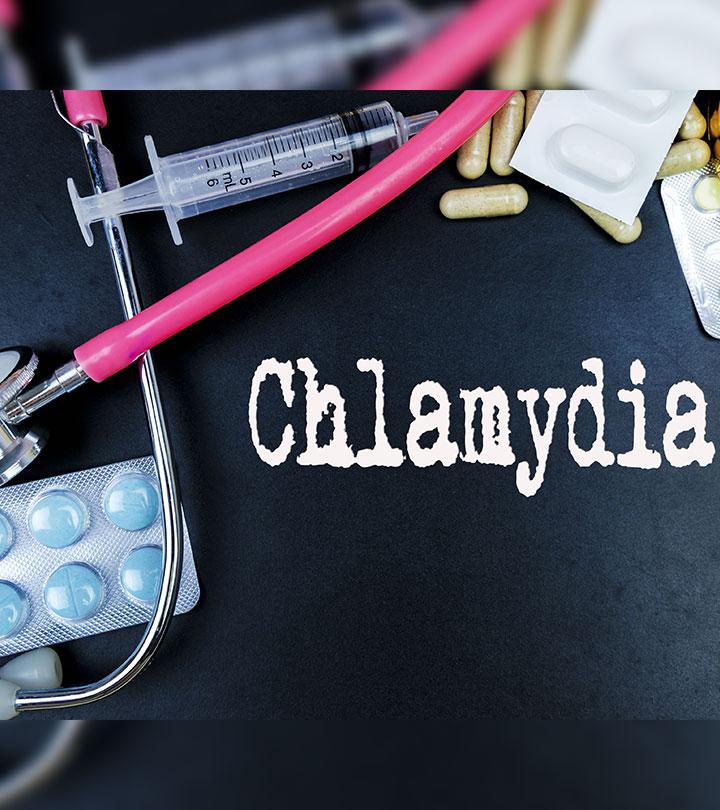6 Natural Ways To Treat Red Spots On Skin And Prevention Tips
These pesky spots can ruin your look, so figure out what's causing them!
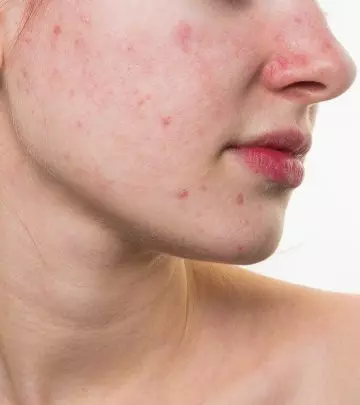
Image: Shutterstock
Red spots on skin are one of the most common marks on the skin that don’t deserve a ‘spot’ on your skin. As filled with pus, itchy, painful, and annoying, red spots can be frustrating and can become a problem if left untreated. While prolonged cases of red spots on skin require medical intervention, you can use natural remedies to get rid of the small red spots on the skin in milder cases. Since red spots can be caused by insect bites, blood spots, rosaceai XAn inflammatory skin condition causing redness and small pus-filled bumps on the skin, common in middle-aged women. , acne, or a symptom of an underlying medical condition, knowing the cause helps determine the right course of treatment. In this article, we explore what causes red spots, their signs and symptoms, and six home remedies you can follow to get rid of them.
In This Article
What Do Red Spots On Skin Mean?
Are the red spots on the face not acne? Red spots on the skin can mean anything from an acute skin infection to a chronic condition. Knowing what causes red spots on the skin will make treatment easier. Some of the common conditions that cause red spots include:
- Heat Rash: Heat rash can cause small red, itchy, and prickly spots on the skin. It usually occurs in skin folds where sweat accumulates, like the groin, chest, back, arms, and armpits (1).
- Contact Dermatitis: It is a common skin allergy condition that occurs when you come in contact with an allergen or an irritating substance. The reaction may show up as an itchy, red rash on the skin (2).
- Ringworm: It is a fungal skin infection that causes red, itchy, circular blotches with raised edges and red spots. It can appear anywhere on the skin but is mainly found on the legs and arms (3).
- Pityriasis Rosea: It is an inflammatory skin condition that starts with a big red patch on the skin, followed by small red spots with a ring-like shape. It usually appears on the chest, abdomen, or back (4).
Guest blogger Beth discussed her experience with rosacea, highlighting its characteristic signs and symptoms in the personal blog I Buy Crap So You Don’t Have To . She notes, “My face is almost always red in the cheeks, nose, and chin; I also have red spots/blemishes all over those areas, and some broken blood vessels around my nose (i).”
- Atopic Dermatitis: It is a common skin condition that causes red, itchy, and scaly blemishes on the skin. It usually occurs in skin folds, like elbows, wrists, necks, knees, or ears (5).
According to a population-based estimate of the prevalence of atopic dermatitis in the US population, the prevalence of atopic dermatitis among the 1278 participating adults was 7.3%. Overall, 60.1%, 28.9%, and 11% of the 1278 participants were classified as having mild, moderate, and severe forms of the disease, respectively.
- Lichen Planus: It is an autoimmune skin condition that causes raised red bumps on different parts of the body, such as the mouth, nails, throat, wrists, back, and ankles (6).
- Psoriasis: A psoriasis rash is an autoimmune skin disorder that gets triggered due to stress, infections, allergen, environmental factors, or injury. Red, itchy, and scaly patches develop on the body due to psoriasis (7).
- Drug Rash: An allergic reaction to a medication can cause a drug rash on the skin. The reaction may appear as small, red bumps or hives and blisters. It may sometimes spread all over the body.
- Petechiae: These are small red dots on the skin formed when the blood vessels under the skin burst. They may occur on the legs, arms, buttocks, and stomach (8).
- Swimmer’s Itch: These are small, reddish pimples that form on the skin after swimming in water contaminated with parasites. They may sometimes cause itching and burning (9).
- Acute Cutaneous Lupus: It often develops along the cheeks and the bridge of the nose. They are also known as the malar rash or the butterfly rash because of their shape. The rash may last between days to weeks and can be triggered by sun exposure. It may also be sometimes mistaken for rosacea (10).
- Meningitis: It starts as small and red pin pricks and spreads quickly before turning into dark red or purple blotches. You can recognize these spots on the face and body by pressing the side of a clear glass against your skin. If the spots do not fade away, they are meningitis spots (11). Meningitis also includes other symptoms like fever, stiff neck, and headaches (12).
There are a few signs and symptoms that you need to look out for when you notice red spots on your skin. Find out more about them in the next section.
Signs And Symptoms
Red spots on the skin are a symptom of various skin conditions. However, a few common symptoms may accompany the red spots. These may change according to the underlying medical condition. Some of the common signs that occur with red spots are:
- Tiny bumps
- Itching
- Flaky or scaly skin
- Red bumps
- Red, flat patches
- Pus-like discharge
- Swollen skin
- Burning sensation
These signs and symptoms may vary according to the underlying condition. You can try some home remedies to treat the red spots before visiting the doctor.
Natural Ways To Treat Red Spots On Skin
1. Lemon Juice
Lemon extracts are used in various skin lightening products due to their skin bleaching properties (13). Lemon juice is rich in vitamin C, which has anti-pigmentary, antioxidant, and anti-aging effects on the skin (14). This can help in reducing the appearance of the red spots on the skin
You Will Need
- 1-2 tablespoons lemon juice
- Cotton pad/ball
What You Have To Do
- Squeeze out some fresh lemon juice and apply it to the affected area using the cotton pad.
- Leave it on for about five minutes and then rinse with water.
- Pat dry and moisturize.
How Often You Should Do This
Repeat this twice every day.
Caution: If you have sensitive skin, dilute the lemon juice with an equal amount of water before applying it. Also, make sure you apply sunscreen after using this remedy as lemon juice can make your skin photosensitivei XExtreme sensitivity of the skin to the ultraviolet rays of the sun causing sunburn or chronic skin illness. .
2. Apple Cider Vinegar
The mild acids present in apple cider vinegar tone the skin and restore the pH balance (15). ACV also has antibacterial properties that can help inhibit the bacteria causing the red spots (16). These properties can promote the healing of irritated and inflamed spots.
- 1/2 teaspoon apple cider vinegar
- 2 tablespoons water
- Cotton ball
What You Have To Do
- Dilute the vinegar in water and apply it all over the affected area.
- Let it dry naturally and then rinse with regular water.
- Pat the skin dry and apply moisturizer.
How Often You Should Do This
Do this twice a day.
3. Aloe Vera
The healing and soothing properties of aloe vera gel are often used to treat skin irritation and ailments (17). The essential nutrients, along with antioxidants and healing compounds, can reduce the red spots and make your skin healthy and glowing.
You Will Need
An aloe vera leaf
What You Have To Do
- Slice the aloe leaf in half and scoop out the gel.
- Apply the gel on the red spots and massage for a minute or two.
- Leave it on for 20-30 minutes and then rinse with water.
- Store the remaining gel in an airtight container.
How Often You Should Do This
Apply aloe vera gel twice a day.
 Quick Tip
Quick TipAdditionally, yogurt can help calm redness. Board-Certified Dermatologist Dr. Joshua Zeichner, says, “Plain yogurt contains proteins that coat the surface of the skin to help repair the skin barrier and calm inflammation. It is also a great DIY treatment for sunburns.”
4. Coconut Oil
Coconut oil offers anti-inflammatory and skin protective benefits (18). It not only soothes and nourishes the skin but also protects it from UV radiation and bacterial infections (19).
You Will Need
Virgin coconut oil
What You Have To Do
- Clean your skin with gentle soap and water.
- Pat dry and massage with a few drops of coconut oil.
- Keep the oil on overnight.
How Often You Should Do This
Do this every night before going to bed.
Caution: Avoid this remedy if you have acne-prone skin.
5. Cocoa Butter

The phytochemicalsi XA class of chemical plant compounds that give them their color, aroma, and flavor and help resist harmful microbes. found in cocoa butter lighten the red spots and alleviate the associated inflammation. This butter also contains antioxidants that help to reverse the damage caused by free radicals. Cocoa butter is also extremely moisturizing for the skin (20).
In addition, cocoa butter is a good source of vitamin E. “It is a potent antioxidant that reduces inflammation and also has emollient benefits to hydrate and soften cells in the outer skin layer,” adds Board-Certified Dermatologist Dr. Joshua Zeichner.
You Will Need
Organic cocoa butter
What You Have To Do
- Massage the affected area gently with a small amount of cocoa butter.
- Leave this on overnight.
- Rinse your face in the morning.
How Often You Should Do This
Repeat this every night.
Caution: If you have oily skin, test the cocoa butter out on a small area first. As it is high in fat content, it might cause acne. Hence, a patch test is recommended before using it to remove red spots on the skin.
6. Dandelion Root
Dandelion root extracts can protect the skin from UVB radiation and prevent premature aging (21). It also exhibits anti-inflammatory properties (22). These properties can help reduce the red spots on the skin, especially those caused by acne and eczema.
You Will Need
- 1 teaspoon dandelion root powder
- A cup of hot water
What You Have To Do
- Brew fresh dandelion root tea by steeping the herb in hot water for a few minutes.
- Strain and drink the tea while it is warm.
How Often You Should Do This
Have 1-2 cups of dandelion root tea for a couple of days.
Dr. Cory Gaskins, BSc, MD, CCFP, suggests a cold compress to soothe irritation and red spots. He says, “Cold compress constricts blood vessels, reduces inflammation, and numbs the pain. So, if you have a red, swollen spot on your skin, reaching for a cold compress is a good idea. Just be sure to wrap it in a cloth so that it doesn’t irritate your skin further. Leave the compress on for 10-15 minutes at a time, and you should see some improvement.”
 Trivia
TriviaThe remedies listed above serve as excellent toners, astringentsi XProperties of liquid-based chemicals or substances to shrink tissues and cells by drawing water out of them. , emollientsi XMoisturizing properties of natural or chemical substances to retain moisture used as moisturizing ingredients in skincare products. , and detoxifying agents. They have shown to be helpful in lightening and fading red spots and soothing the skin to make it healthy. Use them regularly, and you will see the difference. Apart from these remedies, it is important you follow a proper skincare routine along with a healthy diet. Some essential tips are mentioned below.
Tips For Red Spots On Skin
1. Use Good Cosmetics And Personal Hygiene Products
Excessive and prolonged use of artificial cosmetics and chemical-based personal hygiene products, like lipsticks, powders, soaps, lotions, etc., especially the ones of inferior quality, can be harmful to the skin.
They can contain corrosive and unhealthy ingredients. Use nutrient- and natural extract-rich cosmetics instead of their chemically packed counterparts to avoid ill effects like rashes, allergies, acne, red spots, scarring, and other symptoms of irritation and inflammation. Don’t forget to check the expiry date of these products before applying them to avoid harmful chemical reactions on the skin.
2. Exfoliation
Regular and proper exfoliation of the affected area can aid the discoloration and fade away from red spots. It helps to get rid of dirt, unwanted oil, and dead and dry skin cells build-up on the epidermis that hinders the lightening of these red spots. Exfoliation helps in bringing new and healthy skin to the surface, thereby making your skin spotless and flawless.
Exfoliating and scrubbing can be done with natural and organic products, pumice stone, washcloth, and scrubs. They remove the unwanted cells from the surface of the skin and make it look fresh and revitalized.
3. Avoiding Sun Exposure
Red spots on the skin can deepen and aggravate due to exposure to the harmful rays of the sun. It is one of the main reasons for red spots on the face. They can damage the skin cells, promote excess melanini XNatural pigments in humans and animals responsible for the darkening of the color of skin, hair, and eyes. synthesis in the affected region leading to hyperpigmentation, cause skin burns, etc. This damage to the skin decelerates the process of fading and lightening the red spots.
Blogger Beth stressed the importance of sunscreen, stating, “Sunscreen is BY FAR the most important thing and the first step towards helping rosacea.” She recommends using a broad-spectrum level of more than 30 SPF sunscreen every day.
Hence, it is best to protect oneself from these harmful UV rays and use sunscreens and skin care products containing SPF.
4. Proper And Healthy Diet
Maintaining a healthy and balanced diet is a prerequisite for having clear, spotless, and healthy skin. An unhealthy diet can cause allergies, digestive problems, acne, pimples, dryness of skin, etc., which can further initiate the appearance of undesirable red spots on the face and body. To avoid this, one should follow a diet rich in proteins, vitamins, minerals, and other nutrients, which can help the body combat diseases by boosting immunity levels.
Despite taking all the precautions and using home remedies, you may notice that the red spots on your skin are not fading. Learn when you should consult a doctor in the next section.
When Should You See A Doctor?
If home remedies do not work and you want to get rid of the red spots quickly, visit a dermatologist. Opt for professional skin treatments like an AHA or BHA chemical peel to treat severe scarring and redness.
You may have to visit a dermatologist if the red marks have been on your skin since birth (for example, birthmarks). These are a result of genetic factors. In such cases, it is very difficult to fade or lighten these red spots naturally. Cosmetic procedures are the only way to remove these spots.
The use of medicines, ointments, skin creams like calaminei XMedicinal lotion used to relieve itching, pain, and discomfort of the skin caused from sunburn or infection. , laser treatments, surgical options, and other medical and clinical alternatives are helpful in treating, lightening, and removing these unwanted red spots from the body.
Also, if the red spots on the skin are accompanied by fever, fatigue, swelling, breathing trouble, pain, or pus, it is best to seek medical attention at the earliest.
Infographic: What Else Do Red Spots On The Skin Mean?
Red spots on your skin can be painful and annoying. While natural remedies can help soothe those pesky marks on your face, some may require medical intervention. We have listed a few other factors that may result in the development of red spots on your skin. Learn more about them in the infographic below. Illustration: StyleCraze Design Team
The Final Takeaway
Red spots on the skin can be caused by insect bites, rosacea, blood spots, acne, or an underlying medical condition. You can use simple and effective home remedies to get rid of red spots on the skin in mild to moderate cases. Lemon, apple cider vinegar, aloe vera, cocoa butter, coconut oil, and dandelion root tea are some of the most commonly used ingredients in home treatments for red spots. Additionally, you can follow preventive measures to keep red spots at bay, including minimizing sun exposure, avoiding harsh chemicals in products, using sunscreen regularly, exfoliating the face from time to time, and eating a healthy and balanced diet.
Frequently Asked Questions
What are red blood spots?
Red blood spots are reddish or purplish spots called purpura and develop when the blood vessels underlying the skin burst open.
Does cancer cause red spots on the skin?
Yes, leukemia or blood cancer may cause red spots on the skin (23).
What do leukemia red spots look like?
Leukemia spots generally appear in patches and look like pinpoint reddish or purplish spots that may be flat or raised.
Can stress cause red spots on the skin?
Yes. Stress can cause stress rashes or hives that look like raised red bumps on the skin (24).
Do you get red spots on the skin during pregnancy?
Pregnancy skin rash is a common skin condition. So, there are chances of red rash-like skin spots during pregnancy.
How do I get rid of red spots on my face overnight?
Getting rid of the red spots on your face overnight is a challenge. Some believe applying toothpaste to the spots may help, though we recommend against it as it may cause adverse effects. You may instead ice the area, which can help ease the inflammation.
What do I do to the itchy red spots on my face?
Keep yourself from scratching them, as it only makes things worse. Apply calamine lotion to the spots to relieve the itching.
How do you get rid of cherry angiomas on the face?
Some believe that applying diluted apple cider vinegar and tea tree oil may help treat cherry angiomas on the face. Their anti-inflammatory and antimicrobial properties may help shrink these benign skin growths. However, more research is warranted in this regard.
Key Takeaways
- Insect bites, rosacea, blood spots, or acne may cause red spots on the skin.
- Lemon, aloe vera, cocoa butter, and coconut oil may help reduce or lighten the red spots.
- Less sun exposure, avoiding harsh chemicals, using sunscreen, exfoliating, and eating a healthy and balanced diet may help prevent red spots.
- Treating red spots on the skin may require skin treatments like an AHA or BHA chemical peel.
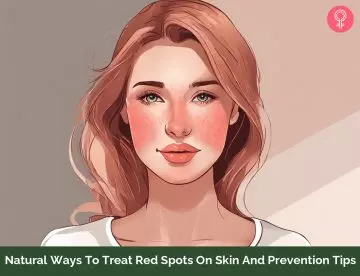
Image: Stable Diffusion/StyleCraze Design Team
Uncover the causes behind those pesky red dots on your face and explore effective management strategies to restore a clear complexion. Watch this informative video to find out more.
Personal Experience: Source
StyleCraze's articles are interwoven with authentic personal narratives that provide depth and resonance to our content. Below are the sources of the personal accounts referenced in this article.
i. Guest Author: On Rosacea and Sensitive Skinhttps://ibuycrapsoyoudonthaveto.wordpress.com/2017/01/02/rosacea-and-sensitive-skin/
References
Articles on StyleCraze are backed by verified information from peer-reviewed and academic research papers, reputed organizations, research institutions, and medical associations to ensure accuracy and relevance. Read our editorial policy to learn more.
- Miliaria
https://www.ncbi.nlm.nih.gov/books/NBK537176/ - Contact Dermatitis
https://www.ncbi.nlm.nih.gov/books/NBK459230/ - Ringworm
https://www.ncbi.nlm.nih.gov/books/NBK169210/ - Pityriasis Rosea
https://www.ncbi.nlm.nih.gov/books/NBK448091/ - Atopic Dermatitis
https://www.ncbi.nlm.nih.gov/books/NBK448071/ - Lichen Planus
https://www.ncbi.nlm.nih.gov/books/NBK526126/ - Diagnosis and management of psoriasis
https://www.ncbi.nlm.nih.gov/pmc/articles/PMC5389757/ - Petechiae
https://www.ncbi.nlm.nih.gov/books/NBK482331/ - Swimmer’s Itch: Incidence and Risk Factors
https://www.ncbi.nlm.nih.gov/pmc/articles/PMC1448328/ - Cutaneous manifestations of “lupus”: systemic lupus erythematosus and beyond, International Journal of Rheumatology, US National Library of Medicine National Institutes of Health
https://www.ncbi.nlm.nih.gov/pmc/articles/PMC8154312/ - Skin rash in meningitis and meningoencephalitis, Neurology, US National Library of Medicine National Institutes of Health.
https://www.ncbi.nlm.nih.gov/pmc/articles/PMC3719428/ - Meningitis, Paediatr Child Health, US National Library of Medicine National Institutes of Health.
https://www.ncbi.nlm.nih.gov/pmc/articles/PMC2804524/ - The Hunt for Natural Skin Whitening Agents International Journal of Molecular Sciences US National Library of Medicine National Institutes of Health
https://www.ncbi.nlm.nih.gov/pmc/articles/PMC2801997/ - Topical Vitamin C and the Skin: Mechanisms of Action and Clinical Applications The Journal of Clinical and Aesthetic Dermatology US National Library of Medicine National Institutes of Health.
https://www.ncbi.nlm.nih.gov/pmc/articles/PMC5605218/ - Application of Topical Acids Improves Atopic Dermatitis in Murine Model by Enhancement of Skin Barrier Functions Regardless of the Origin of Acids” Annals of dermatology US National Library of Medicine National Institutes of Health.
https://www.ncbi.nlm.nih.gov/pmc/articles/PMC5125949/ - Authenticating apple cider vinegar’s home remedy claims: antibacterial antifungal antiviral properties and cytotoxicity aspects. Natural Product Research US National Library of Medicine National Institutes of Health.
https://www.ncbi.nlm.nih.gov/pubmed/29224370 - ALOE VERA: A SHORT REVIEW Indian Journal of Dermatology US National Library of Medicine National Institutes of Health.
https://www.ncbi.nlm.nih.gov/pmc/articles/PMC2763764/ - In vitro anti-inflammatory and skin protective properties of Virgin coconut oil. Journal of Traditional and Complementary Medicine US National Library of Medicine National Institutes of Health.
https://www.ncbi.nlm.nih.gov/pubmed/30671361 - Anti-Inflammatory and Skin Barrier Repair Effects of Topical Application of Some Plant Oils International Journal of Molecular Sciences US National Library of Medicine National Institutes of Health.
https://www.ncbi.nlm.nih.gov/pmc/articles/PMC5796020/ - Cocoa Bioactive Compounds: Significance and Potential for the Maintenance of Skin Health Nutrients US National Library of Medicine National Institutes of Health.
https://www.ncbi.nlm.nih.gov/pmc/articles/PMC4145303/ - Dandelion Extracts Protect Human Skin Fibroblasts from UVB Damage and Cellular Senescence Oxidative Medicine and Cellular Longevity US National Library of Medicine National Institutes of Health.
https://www.ncbi.nlm.nih.gov/pmc/articles/PMC4630464/ - Taraxacum–a review on its phytochemical and pharmacological profile. Journal of Ethnopharmacology US National Library of Medicine National Institutes of Health.
https://www.ncbi.nlm.nih.gov/pubmed/16950583/ - Petechial rash in children: a clinical dilemma: Why emergency nurses must be aware of the differential diagnoses associated with petechial rash before initiating treatment for invasive meningococcal disease
https://www.researchgate.net/publication/302979211_Petechial_rash_in_children_a_clinical_dilemma_Why_emergency_nurses_must_be_aware_of_the_differential_diagnoses_associated_with_petechial_rash_before_initiating_treatment_for_invasive_meningococcal_dis - Association of psychological stress with skin symptoms among medical students
https://www.ncbi.nlm.nih.gov/pmc/articles/PMC5885122/





